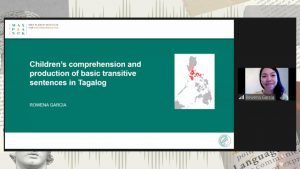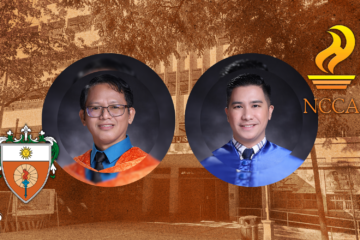by ARTHUR N. APOSTOL

RESEARCH ON understudied languages, such as Filipino, could help broaden and deepen the understanding of language acquisition and processing in the field of psycholinguistics, an expert said.
“Typically, these understudied languages are those spoken in developing countries like ours [the Philippines], and it makes research on understudied languages a priority,” Rowena Garcia, a postdoctoral researcher at the Max Planck Institute for Psycholinguistics, said in a webinar organized by the UST English Language Studies Society last Oct. 30.
She added that most knowledge on language acquisition is conducted in English and other Indo-European languages, so she focused her research on Tagalog.
“This bias means that these languages are taken as the prototype for acquisition even though we know the languages of the world show a remarkable amount of diversity,” she said.
“We can say that the field’s reliance on a small and unrepresentative sample of languages has no doubt skewed theoretical development,” she added.
Her study directed on how Filipino children understood sentences, as identifying “who did what to whom” is a critical task in daily communication, Garcia said.
Numerous studies have shown that the passive structure of sentences is more difficult to understand than their active counterparts, and children identify the first noun they see as the doer of an action, Garcia said.
“This is also the case in languages with grammatical cases, and we could test a comparable structure in Tagalog,” she added.
Psycholinguistics in research
Patricia Amillos, a doctoral candidate of the International Doctorate for Experimental Approaches to Language and Brain program, said the field of psycholinguistics is more than language and psychology as it also collaborates with various professions to further understand language processing changes.
Other professions allow psycholinguistics to explore beyond the typical language processing, such as the disruption in language development or acquisition, or how a brain injury affects a person’s language function, she added.
“Of course, there are other fields involved as well, but even if the name is just psycholinguistics, you can see it takes a collaboration among many professionals in order to really figure out how we are able to use language,” Amillos said.
Amillos said that psycholinguistics could also be combined with computer science, stating that linguists use it to represent language through a machine’s mind and to take theories and test them out in a controlled environment.
“We work with neuroscientists too, because as you know, language originates in the mind, and the mind originates in the brain, a physical organ that we can use several techniques in order to measure its activity,” she added.
Amillos also shared how psycholinguists gather data and showed how she did her experiment on first language acquisitions on 4-year-old German kids.
Her experiment focused on word learning study on children, or how they can detect statistical patterns or likelihoods in the language they hear.
The “Tell Me More: A Webinar on Psycholinguistics” was conducted via Zoom and live-streamed on Facebook.
The Flame is a media partner in the event. F



